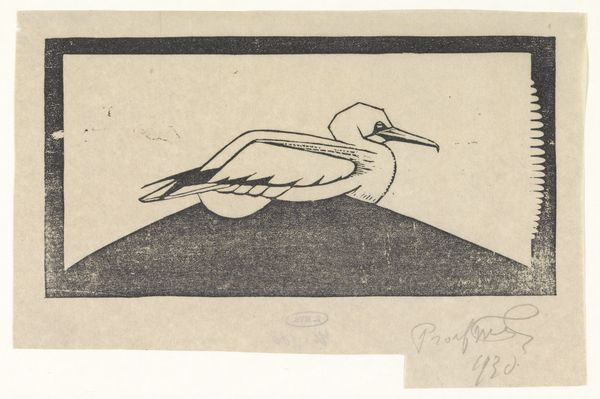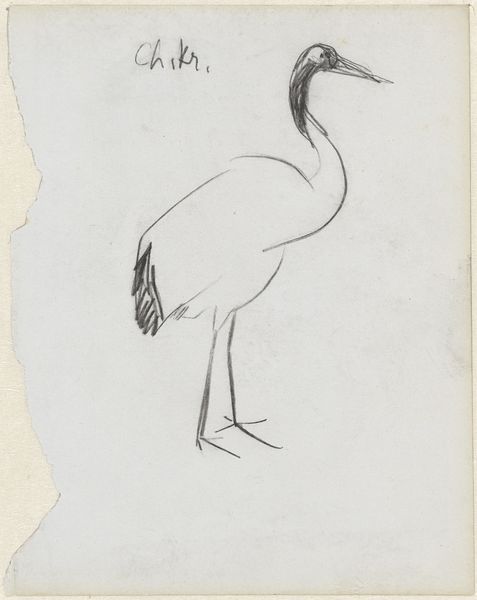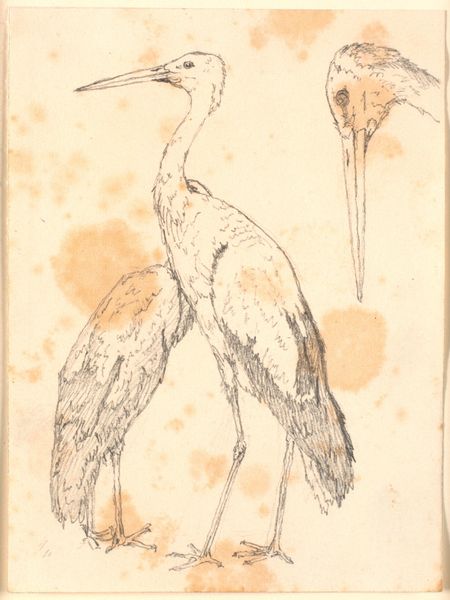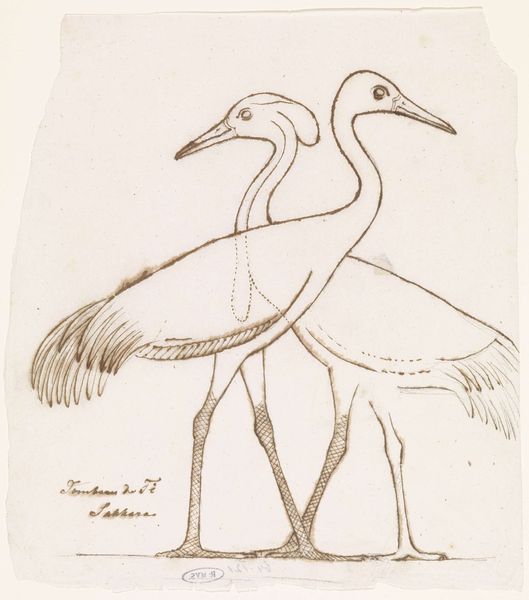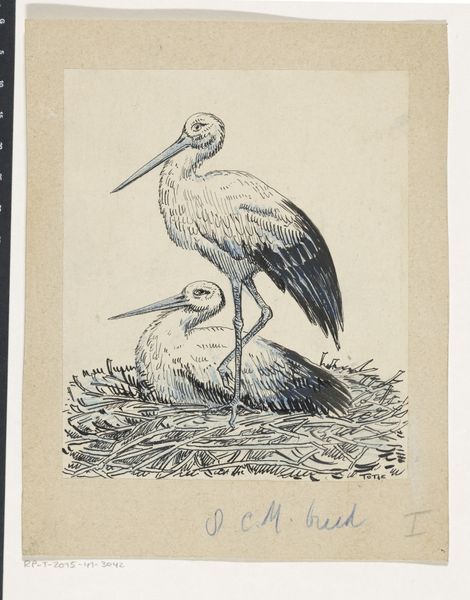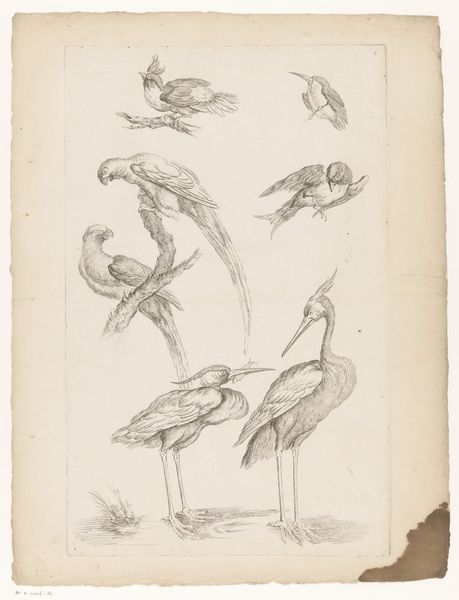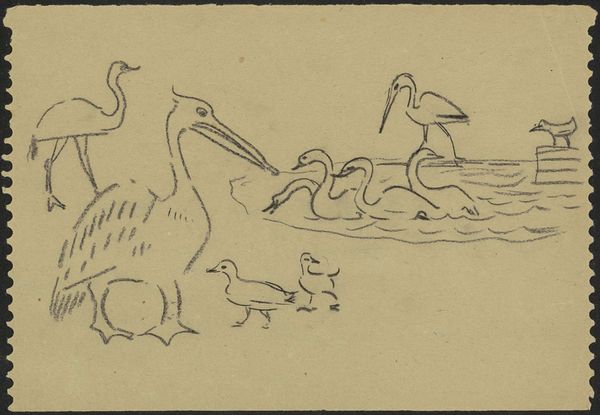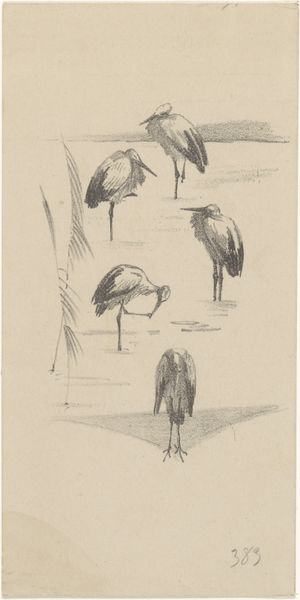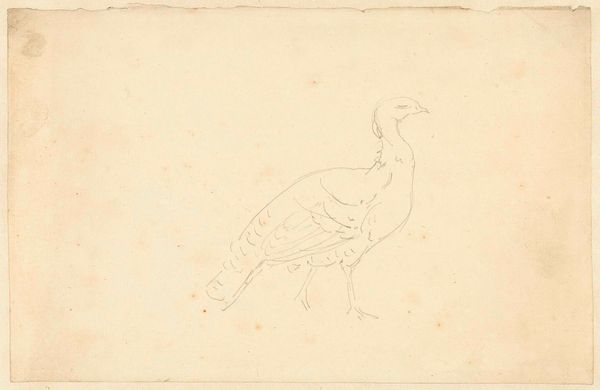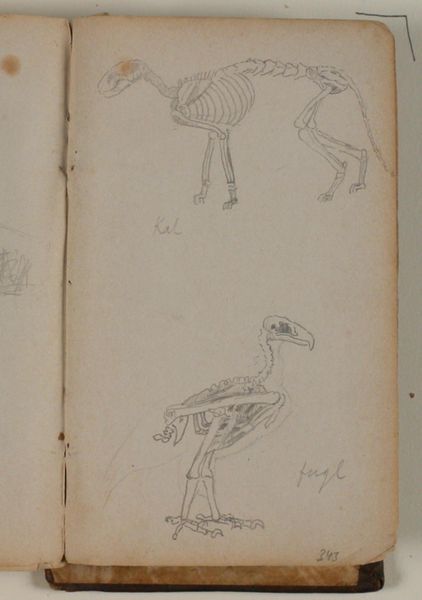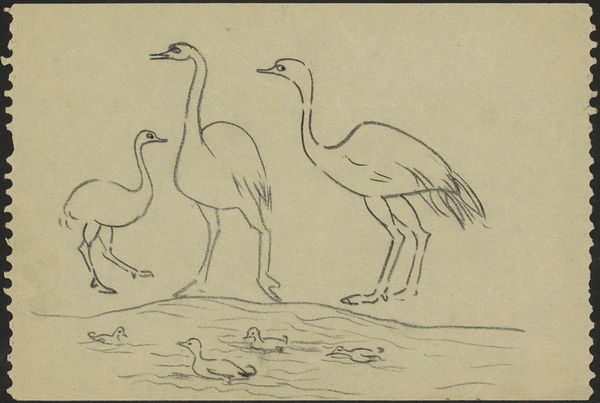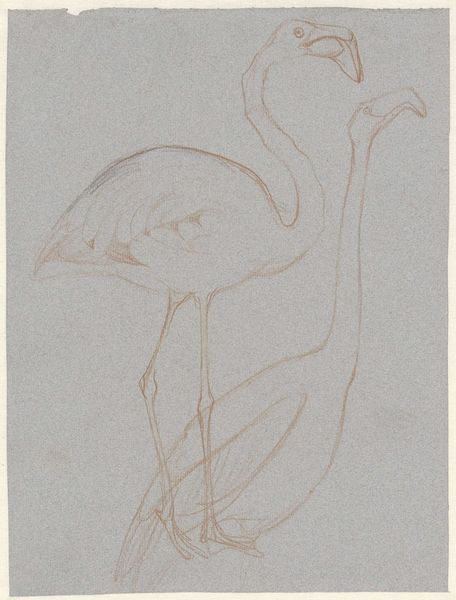
Dimensions: height 180 mm, width 123 mm
Copyright: Rijks Museum: Open Domain
Curator: This is a pen and ink sketch titled "Ooievaars", which translates to "Storks," by Gerrit Willem Dijsselhof, dating from around 1904-1906. It’s currently part of the Rijksmuseum's collection. What strikes you first about it? Editor: The simplicity. There’s a starkness to the storks depicted with such minimal lines, almost like a child's drawing, yet somehow full of inherent grace. The storks evoke this primal connection to nature, and feel like archetypes of birds, reduced to their essential forms. Curator: Indeed. It feels almost like a glimpse into the artist's personal sketchbook, a momentary observation captured on paper. There’s also an interesting tension at play. The larger stork seems self-assured, whereas the smaller one is rather meek. Editor: Storks have, for centuries, been potent symbols of birth and new beginnings in various cultures. I wonder if Dijsselhof intended to tap into this universal symbolism, using these iconic birds as messengers of hope or transformation at a time of changing social values. Curator: That's fascinating. He may have certainly been aware of those ingrained associations. The lack of contextual detail adds to this impression— they are representations rather than realistic portrayals. The question that really interests me, then, is how such seemingly basic sketches found their way into the permanent collection of a national museum like the Rijksmuseum. Editor: Perhaps it’s the rawness, the unrefined energy of the sketch that makes it so appealing. The unpretentious lines lend the sketch its immediacy, breaking through the layers of academic formality often associated with classical art. The quick strokes give a vitality often unseen in overly polished pieces. Curator: Possibly, there is a certain honesty to the form. Works like these also reveal the cultural contexts within which the artist was creating; one wonders how the storks—and their implied associations with fertility or purity or something else entirely— resonated at the time. Editor: Absolutely, it’s a perfect study in the evocative potential held within seemingly simple images. A true showcase of how fundamental symbolism can convey more significant ideas than complex realism sometimes allows. Curator: I find myself looking at how public art institutions collect and interpret such pieces, especially sketches, when evaluating their function in constructing our art histories. Thank you for helping me look deeper into it.
Comments
No comments
Be the first to comment and join the conversation on the ultimate creative platform.
